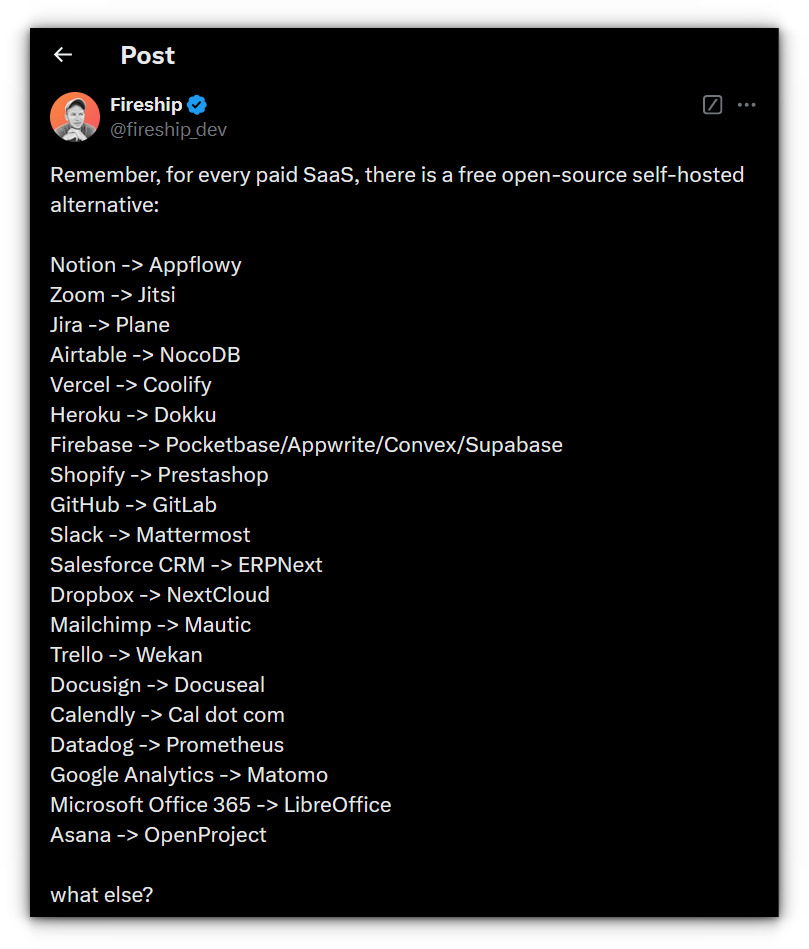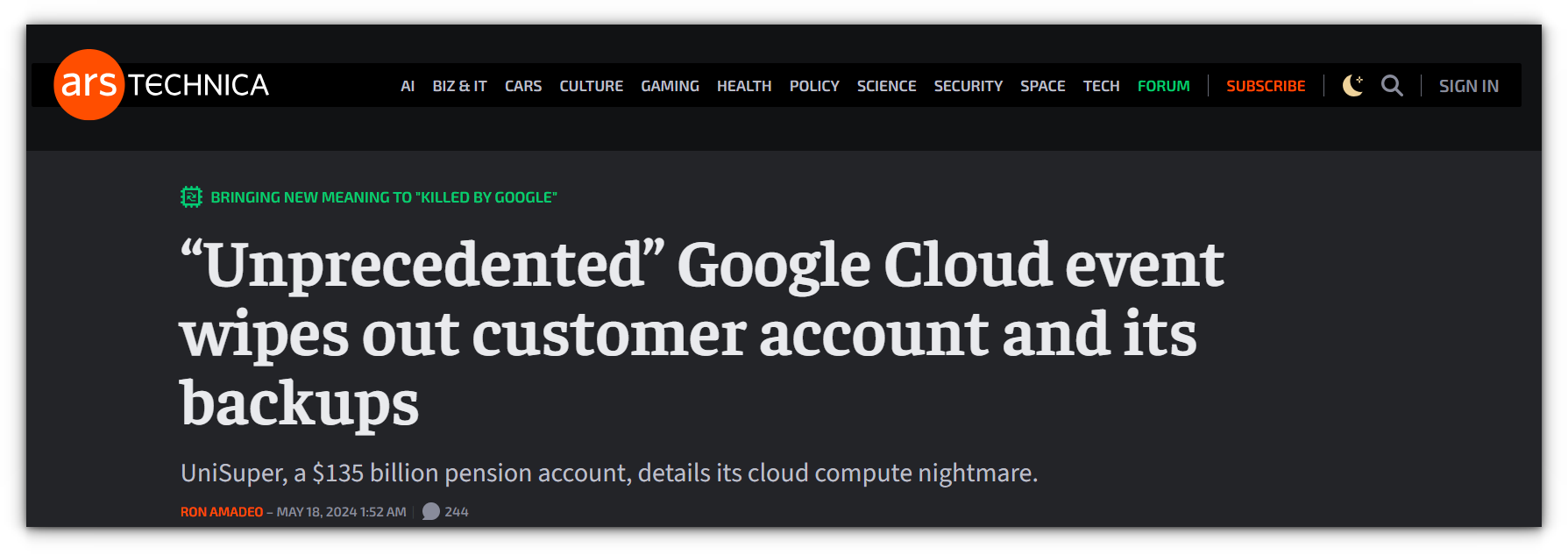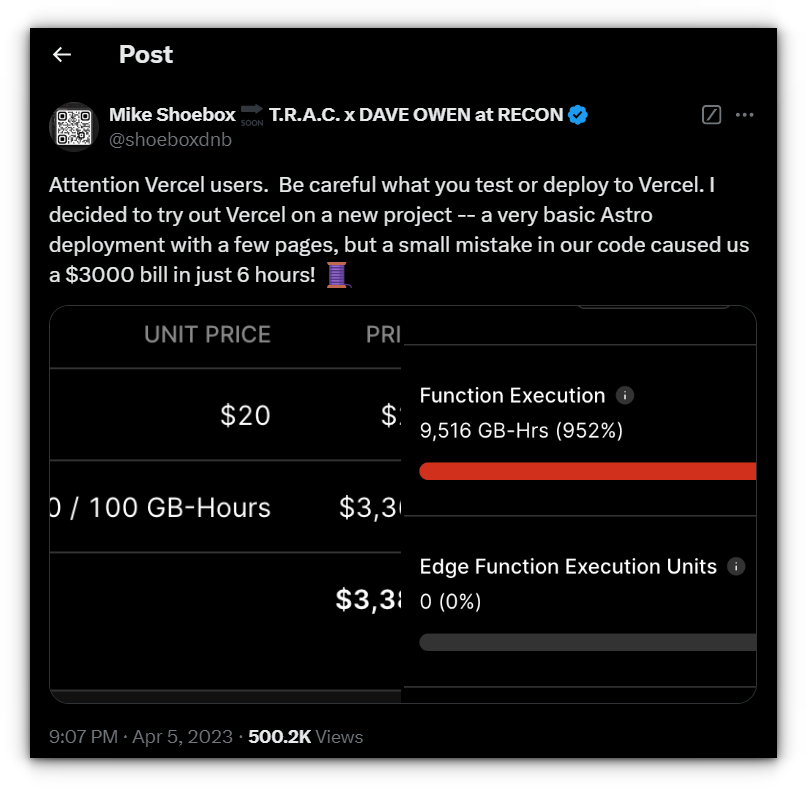Why Homelab When You have Cloud Services Like AWS, Vercel, Hetzner?
Mon, 26 May 2025 14:31:56 +0530
I see a lot of posts on my Twitter (or X) feed debating the merits of ditching cloud services in favor of homelab self-hosted setups just like I tried hosting Wikipedia and the Arch wiki. Some even suggest using bare-metal servers for professional environments.

While these posts often offer intriguing tools and perspectives, I can't help but notice a pattern: companies lean heavily on cloud services until something goes catastrophically wrong, like Google Cloud accidentally deleting customer data.

However, let’s be real, human error can occur anywhere. Whether in the cloud or on-premises, mistakes are universal.
So, no, I’m not here to tell you to migrate your production services to a makeshift homelab server and become the next Antoine from Silicon Valley.
But if you’re wondering why people even homelab in the era of AWS and Hetzner, I’m here to make the case: it’s fun, empowering, and yes, sometimes even practical.
1. Cost control over time
Cloud services are undeniably convenient, but they often come with hidden costs. I still remember during my initial days here at It's FOSS, and Abhishek messaged me reminding me to delete any unused or improperly configured Linode instances.
That’s the thing with cloud services, you pay for convenience, and if you’re not meticulous, it can snowball.

A homelab, on the other hand, is a one-time investment. You can repurpose an old PC or buy retired enterprise servers at a fraction of their original cost.
Sure, there are ongoing power costs, but for many setups, especially with efficient hardware like Raspberry Pi clusters, this remains manageable.
I'll take this opportunity to share my favorite AWS meme.

2. Learning and experimentation
If you’re in tech, be it as a sysadmin, developer, or DevOps engineer, having a homelab is like owning a personal playground.
Want to deploy Kubernetes? Experiment with LXC containers? Test Ansible playbooks? You can break things, fix them, and learn along the way without worrying about production outages or cloud charges.
For me, nothing beats the thrill of running Proxmox on an old Laptop with a Core i5, 8 GB of RAM, and a 1 TB hard drive.
It’s modest (you might've seen that poor machine in several of my articles), but I’ve used it to spin up VMs, host Docker containers, and even test self-hosted alternatives to popular SaaS tools.
3. Privacy and ownership
When your data resides in the cloud, you trust the provider with its security and availability. But breaches happen, and privacy-conscious individuals might balk at the idea of sensitive information being out of their direct control.
With a homelab, you own your data. Want a cloud backup? Use tools like Nextcloud. Need to share documents easily? Host your own FileBrowser. This setup isn’t just practical, it’s liberating.
Sure, there’s a learning curve and it could be steep for many. Thankfully, we also have plug-and-play solutions like CasaOS, which we covered in a previous article. All you need to do is head to the app store, select 'install,' and everything will be taken care of for you.
4. Practical home uses
Homelabs aren’t just for tech experiments. They can serve real-world purposes, often replacing expensive commercial solutions:
- Media servers: Host your own movie library with Jellyfin or Plex. No subscription fees, no geo-restrictions, and no third-party tracking, as long as you have the media on your computer.
- Home security: Set up a CCTV network with open-source tools like ZoneMinder. Add AI-powered object detection, and you’ve built a system that rivals professional offerings at a fraction of the cost.
- Family productivity: Create centralized backups with Nextcloud or run remote desktop environments for family members. You become the go-to tech person for your household, but in a rewarding way.
For my parents, I host an Immich instance for photo management and a Jellyfin instance for media streaming on an old family desktop. Since the server is already running, I also use it as my offsite backup solution, just to be safe. 😅

What about renting a VPS for cloud computing?
I completely understand that renting a VPS can be a great choice for many. It offers flexibility, ease of use, and eliminates the need to manage physical hardware.
These days, most VPS providers like AWS, Oracle, and others offer a 1-year free tier to attract users and encourage them to explore their platforms. This is a fantastic opportunity for beginners or those testing the waters with cloud hosting.
I’ve also heard great things about Hetzner, especially their competitive pricing, which makes them an excellent option for those on a budget.
In fact, I use Nanode myself to experiment with a DNS server. This setup spares me the hassle of port forwarding, especially since I’m behind CGNAT.
If you’re interested in hosting your own projects or services but face similar limitations, I’ve covered a guide on Cloudflare Tunnels that you can consult, it’s a handy workaround for these challenges.
Personally, I believe gatekeeping is one of the worst things in the tech community. No one should dictate how or where you host your projects. Mix and match! Host some services on your own systems, build something from scratch, or rent a VPS for convenience.
Just be mindful of what you’re hosting like ensuring no misconfigured recursive function is running loose and keep exploring what suits your needs best.
My journey into homelab
My journey into homelabbing and self-hosting started out of necessity. When I was in university, I didn’t have the budget for monthly cloud server subscriptions, domain hosting, or cloud storage.
That limitation pushed me to learn how to piece things together: finding free tools, configuring them to fit my needs, diving into forum discussions, helping others solve specific issues, and eagerly waiting for new releases and features.
This constant tinkering became an endless cycle of learning, often without even realizing it. And that’s the beauty of it. Whether you’re self-hosting on a VPS or your homelab, every step is a chance to explore, experiment, and grow.
So, don’t feel constrained by one approach. The freedom to create, adapt, and learn is what makes this space so exciting.
Wrapping up
At the end of the day, whether you choose to build a homelab, rent a VPS, or even dabble in both, it’s all about finding what works best for you. There’s no one-size-fits-all approach here.
For me, homelabbing started as a necessity during my university days, but over time, it became a passion, a way to learn, experiment, and create without boundaries.
Sure, there are challenges, misconfigured services, late nights debugging, and the occasional frustration, but those moments are where the real learning happens.
Renting a VPS has its perks too. It’s quick, convenient, and often more practical for certain projects.
I’ve come to appreciate the balance of using both approaches, hosting some things locally for the sheer fun of it and using VPS providers when it makes sense. It’s not about choosing sides; it’s about exploring the possibilities and staying curious.
If you’re someone who enjoys tinkering, building, and learning by doing, I’d encourage you to give homelabbing a try. Start small, experiment, and let your curiosity guide you.
And if you prefer the convenience of a VPS or a mix of both, that’s perfectly fine too. At the end of the day, it’s your journey, your projects, and your learning experience.
So, go ahead, spin up that server, configure that service, or build something entirely new. The world of self-hosting is vast, and the possibilities are endless. Happy tinkering!

Recommended Comments